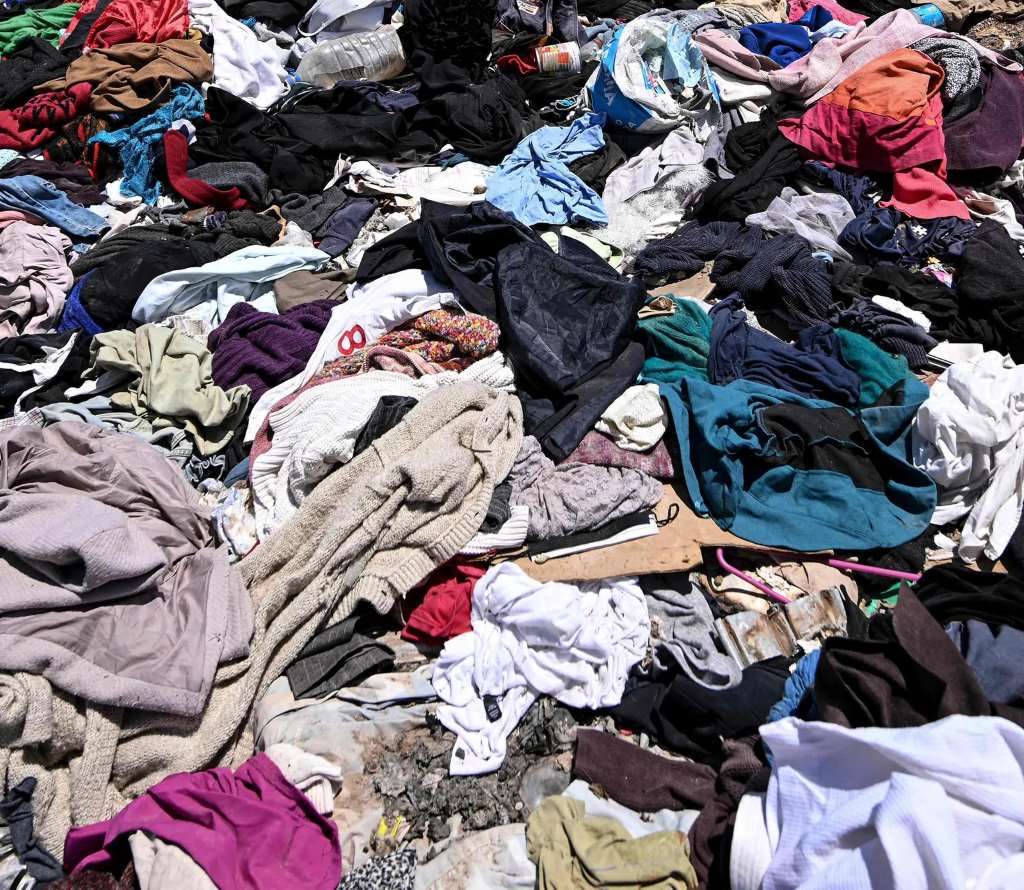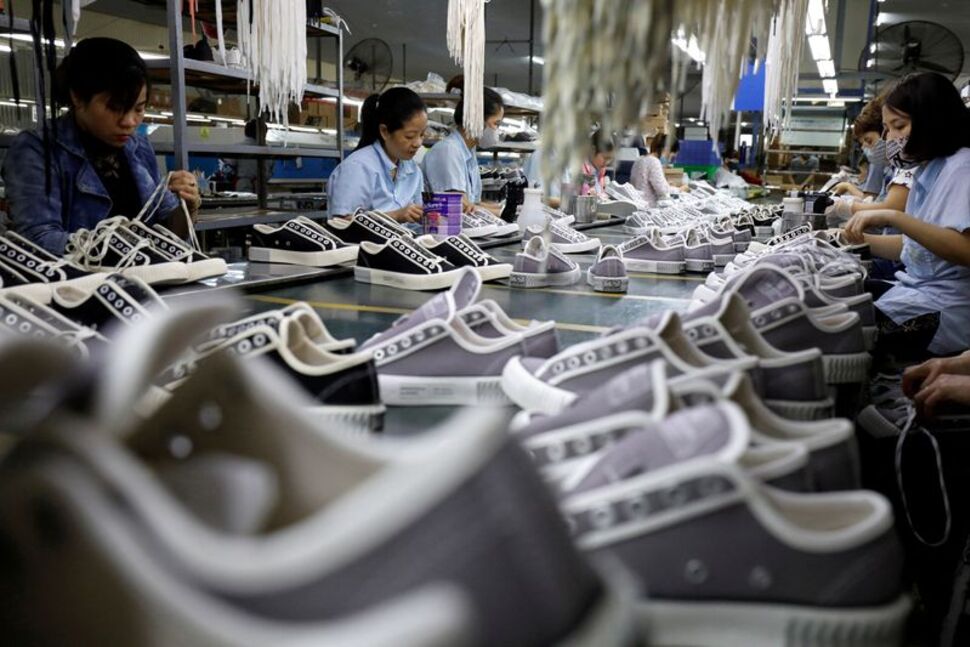FW
The Indian Government has raised the duty drawback rates for various linen products made from cotton and blended fibers. The Ministry of Finance's Department of Revenue issued a notification on April 30, 2024 to outline these adjustments and amendments.
According to the notification, certain revisions have been made under the Customs and Central Excise Duties Drawback Rules of 2017 to enhance the reasonability of provisions. For instance, the duty drawback rate for items like bed linen, table linen, toilet linen, and kitchen linen made from cotton fibers notably, within the HSN code 630201has been raised from 2.6 per cent to 3 per cent. Additionally, the upper cap of duty drawback has been elevated from Rs 40.5 per kg to Rs 68.9 per kg for these specific products.
In parallel, the government has also increased the duty drawback rate from 2.4 per cent to 2.6 per cent for bed linen, table linen, toilet linen, and kitchen linen made from a blend of man-made fibers and cotton, categorised under HSN code 630202. However, there hasn't been a corresponding adjustment to the upper cap of the duty drawback; it remains unchanged.
Kontoor Brands Inc. emerges as a frontrunner in stimulating demand within the denim sector, leveraging strategic collaborations and innovative product offerings to enhance consumer engagement. Spearheading this drive is Kontoor's astute partnership with renowned artists and its integration into prominent music events, propelling Wrangler's visibility while fostering brand loyalty among consumers.
Scott Baxter, Kontoor's chairman and CEO, highlighted Wrangler's notable advancements in product innovation and direct-to-consumer (DTC) sales, showcasing an 8 per cent growth in the global DTC segment. With an expanding footprint beyond traditional denim wear, Wrangler diversifies its portfolio, capitalizing on emerging markets such as outdoors, which now constitutes a substantial $200 million segment.
The company's foray into collaborations, exemplified by the upcoming release of Lainey Wilson's collection, signifies a strategic push towards capturing diverse consumer segments, particularly the younger demographic. Baxter emphasized Wrangler's resonance with contemporary trends through collaborations like Staud, targeting the evolving preferences of the youthful female audience.
Despite challenges in wholesale distribution, Kontoor remains resilient, with Lee brand witnessing traction in innovative product lines, particularly catering to the burgeoning demand among younger female consumers. Baxter outlined key initiatives such as the heritage collection and Lee Golf, poised to amplify brand presence and drive sustained growth.
Moreover, Kontoor's multiyear initiative, Project Jeanius, underscores a commitment to bolster profitability through operational efficiencies, positioning the company for sustained growth in the long term.
While first-quarter financials reflect a modest decline in net income, Kontoor's adjusted earnings per share exceeded Wall Street expectations, buoyed by robust gross margin expansion. Encouraged by the promising performance, Kontoor revised its full-year earnings outlook, anticipating stronger gross margin expansion and reaffirming its revenue forecast.
In navigating dynamic market conditions, Kontoor Brands stands resolute, leveraging innovation and strategic partnerships to fortify its position as a leader in the denim landscape, poised for sustained growth and profitability.
Itema plans to unveil its cutting-edge weaving innovations alongside a comprehensive range of digital features and intelligent solutions through the Hello Itema Customer Portal at ITM 2024.
Through these exhibits, Itema aims to amplify benefits for its Turkish clientele. Attendees at ITM will have the opportunity to witness live demonstrations of the latest R9500EVOterry, renowned for its exceptional textile versatility and machine reliability, favored by terry towel weavers worldwide. The enhanced EVO iteration of the R9500EVOterry promises even greater textile mastery, performance, and user-friendliness.
Presented in both wide and narrow widths, the new R9500EVO underscores the superior textile proficiency achieved through EVO enhancements.
The company will introducing the innovative isaverfancy machine, built upon the technology of isavereco, available in up to six weft colors, allowing for the elimination of waste selvedge on the left-hand side of the rapier machine. This breakthrough translates into substantial cost savings and a significant contribution to sustainable weaving by reducing raw material and resource wastage.
The customer portal HelloItema will demonstrate a comprehensive suite of digital functionalities and intelligent solutions, empowering Itema's customers to streamline their workflow effortlessly. Accessible via any digital device through a browser or app, and directly from the machine console on EVO generation Itema machines from the mill floor, HelloItema facilitates seamless procurement of original spare parts through an optimised e-commerce platform, enables users to track order statuses, open service tickets, and access relevant machine documents with a simple click.
Moreover, visitors to the Itema booth will have the opportunity to explore the latest solutions for upgrading existing Itema, Sulzer, Somet, and Vamatex looms, alongside a comprehensive range of OEM spare parts. Additionally, Itema Group's subsidiary, Lamiflex, will showcase its advanced weaving accessories, including rapier tapes and sprocket wheels, further enriching the offerings at ITM in the Itema booth.
A representative of the business community, the Federation of Bangladesh Chamber of Commerce and Industry (FBCCI), has urged the government to increase support for backward linkage industries, focusing particularly on the leather, and RMG sectors.
During the inaugural meeting of the Standing Committee on Backward Linkage Industry at FBCCI’s Motijheel office in Dhaka, chaired by Omar Faruk, Shenzhen Metal Industries, the discussion highlighted the urgent need for improved facilities.
Amin Helali, Director, Standing Committee, emphasised on the crucial role of backward linkage industries in the country’s economic growth and foreign exchange earnings, spanning from readymade garments to leather.
Despite their significant contribution, these industries face various challenges, particularly the lack of direct export avenues.
The committee emphasised the necessity of government cooperation and stakeholder involvement to effectively address these challenges. The industry has progressed from being an importer of 100 per cent of materials for production to achieving self-sufficiency, even amidst disruptions like the COVID-19 pandemic, Helali pointed out. He also highlighted the sector’s resilience in maintaining exports despite import interruptions.
For its South Asian customers, the Lycra Company has launched the Lycra One™ marketplace that offers mill partners an additional sales avenue, and connects them with qualified leads seeking certified fabrics.
Serving as an online platform to connect brands, retailers, and garment makers with mills worldwide, this digital B2B platform enables Lycra to present its products and services more comprehensively, incorporating new B2B and B2C websites for the Lycra®, Coolmax®, and Thermolite® brands.
It provides South Asian fabric mills with not just the required knowledge to sell tools but also market research and fashion trend forecasts to help differentiate their collections on a global stage. Fabric and garment makers can acquire qualified leads from the trade without any cost and promote their unique capabilities, attracting potential customers from all regions.
Brands and retailers can source fabrics using this tool anytime and anywhere. They can also identify new resources and capabilities for cross-functional segments in all regions, and access a variety of services under one roof.
The Lycra Company recognises the South Asian region as a growing market across all segments of the apparel market, especially in countries like Pakistan, India, and Bangladesh, where vertical integration is increasing from raw materials to finished products, making them key manufacturing hubs. This shift reduces lead times and streamlines the value chain.
South Asian manufacturers are investing in product quality, cost competitiveness, and technology to meet global demands, encouraging diversification and R&D in textiles.
The third phase of the 135th China Import and Export Fair, also known as the Canton Fair, showcased an impressive range of footwear, apparel, and accessories to traders worldwide. These exhibits not only highlighted the ever-evolving preferences in fashion but also provided a lucrative opportunity for buyers to explore emerging trends poised to dominate the market.
One of the outstanding exhibits at the fair included the ‘Night Elf’ series of sports shoes by the Dr Kong brand from Guangdong Footprint Footwear Co. These sneakers are a fusion of health-conscious design and stylish aesthetics. Inspired by the enigmatic aurora borealis, they are available in vibrant colors, and embedded with the glow-in-the-dark KPU technology. Boasting a three-dimensional foot protection design, automatic buckle shoelaces, ultra-soft foam soles, and full-contact insoles, these shoes prioritise both comfort and style.
Another notable presentation at the fair was the ‘Floating Light Illusion’ suit from Hunan Huasheng Industrial & Trading Co, which seamlessly blends Eastern elegance with Western fashion sensibilities. Utilising classic pleating techniques, the garments exude volume yet maintain a natural flow, resembling graceful ink wash paintings in motion.
Qingzhou Tanboer Garment Co showcased its multifunctional down jackets, which marry chic aesthetics with innovative features. Featuring graphene honeycomb thermal lining technology for efficient heat retention, these jackets also utilise outer fabric combining volcanic rock quick-heating fibers with nano-level aero gel granules, forming a robust cold barrier while remaining lightweight. Crafted with German fluff-preventive needles and British Coats thread, these jackets offer warmth, lightweight comfort, and defense against fluff leakage and static electricity.
As China emerges from the aftermath of the coronavirus pandemic, luxury brands are striving to regain the attention of its consumers. In April this year, Gucci owner, Kering experienced an 11 per cent decline in sales for the first quarter, attributed to challenging market conditions in China.
According to Fflur Roberts, Head-Luxury, Euromonitor International, Gucci is not the only brand grappling with the impact of reduced domestic spending in China. Luxury brands with a strong presence in the country, such as Louis Vuitton, are implementing strategies to entice back their ‘very important clients’ (VICs). Louis Vuitton recently hosted a ‘Voyager’ show in Shanghai, collaborating with contemporary Chinese artist Sun Yitian and featuring leading pieces adorned with bold colors and cartoon-like animals.
The event was attended by leading Hollywood celebrities like Cate Blanchett and Jennifer Connelly alongside Chinese megastars and brand ambassadors Liu Yifei and Jackson Wang. .
Meanwhile the parent company of Louis Vuitton, LVMH reported a modest growth rate in sales during the quarter as the overall luxury market in China has slowed down. Prada and Hermes, however, exceeded analysts' expectations in the first quarter, indicating pockets of strength in the market.
Despite these successes, there's a notable shift in consumer behavior towards experiential luxury over luxury goods, as highlighted in a report by research firm Hurun. Factors such as the absence of high-spending Chinese tourists during the pandemic have impacted Europe's luxury goods sector, prompting global brands to tailor their offerings and events more closely to the Chinese market.
Lisa Nan, Correspondent, Jing Daily observes, there is a cautious and value-driven approach among Chinese luxury consumers, with some checking the second-hand market value of handbags before purchasing. This cautious sentiment underscores the challenging outlook for the luxury market, although China's considerable population of individuals with high net worth remains an opportunity for brands.
Overall, as China's luxury market navigates through economic uncertainties and changing consumer preferences, brands are advised to exercise caution while recognising the enduring potential of this lucrative market segment.
Comprehensive statistics by the Export Promotion Bureau (EPB) indicate, Bangladesh’s RMG exports grew by 4.97 per cent Y-o-Y to $40.49 billion during the period spanning July to April 2023-24 compared to $38.58 billion in the corresponding period of the previous fiscal
Knitwear exports from the country increased by 9.11 per cent to $22.88 billion. On the other hand, exports of woven garments increased marginally by 0.03 per cent to $17.62 billion, highlighting the sector's resilient performance.
According to Mohiuddin Rubel, Director, BGMEA, these figures demonstrate a notable growth trajectory in the Bangladesh RMG sector.
However, single-month export earnings by Bangladesh declined by 1.01 per cent to $3.29 per cent during April 2024 compared to April 2023.
Despite this minor setback, the broader picture portrays a robust and thriving apparel export sector, reinforcing Bangladesh's position as a key player in the global garment industry. The steady growth trajectory underscores the resilience and adaptability of the country's garment manufacturers and exporters, navigating through various challenges to maintain a competitive edge in the international market.
In November 2023, India exported approximately 63 million sq m of cotton woven fabrics, marking a 4.3 per cent rise from the previous month. Despite this uptick, exports showed a mild overall decrease during the reviewed period. The most rapid growth occurred in December 2022, with a 12 per cent increase month-on-month. However, from February to November 2023, exports remained relatively stagnant, with a peak of 81 million sq m in January 2023.
In terms of value, cotton fabric exports from India sharply declined to $134 million in November 2023, according to IndexBox estimates. Despite fluctuations, exports maintained a relatively flat trend overall. The highest growth rate was recorded in August 2023, with a 13 per cent increase compared to the previous month. However, from April to November 2023, exports failed to regain momentum after reaching a record high of 180 million sq m in March 2023.
Bangladesh emerged as the primary destination for Indian cotton fabric exports, accounting for 28 per cent of total exports, followed by Sri Lanka and South Korea. The average monthly growth rate in volume to Bangladesh was 1.0 per cent, while Sri Lanka experienced a slight decline of 0.8 per cent per month, and South Korea saw an increase of 2.0 per cent per month.
In terms of value, Bangladesh remained the key market, comprising 27 per cent of total exports, followed by Sri Lanka and Nigeria. While exports to Bangladesh saw modest growth, Sri Lanka experienced a slight decline, and Nigeria showed significant monthly growth of 7.0 per cent.
The majority of exports consisted of woven fabrics of cotton containing 85 per cent or more by weight, weighing not more than 200 g/sq m, which constituted 68 per cent of total exports. This type of fabric also dominated in terms of value, comprising 63 per cent of total exports. Woven fabrics of cotton weighing more than 200 g/sq m and mixed fabrics with man-made fibers held smaller shares.
Valued at $288 billion in 2023, the global plus size market is projected to surpass $501.35 billion by 2033, with a 5.7 per cent CAGR expected during this period.
According to a report by Future Market Insights, central to this growth is the body positivity movement, which champions inclusivity and encourages individuals to embrace their bodies, driving demand for fashionable plus-size alternatives. Fashion norms have evolved towards diversity, prompting designers and retailers to offer trendy solutions catering to plus-size consumers' fashion-forward tastes.
Moreover, heightened consumer awareness has fueled demand for attractive and well-fitting plus-size clothing, with individuals increasingly vocal about their preferences. However, challenges such as size discrepancies and limited retail availability hinder industry expansion, impacting the purchasing experience and overall accessibility for plus-size customers.
Despite these challenges, the plus-size clothing industry presents opportunities for innovation and expansion. Online retail expansion and customisation options are key areas of potential growth. eCommerce platforms offer a vast reach and the ability to offer diverse sizes and designs, providing a comfortable and inclusive shopping experience.
Furthermore, customisation and personalisation options allow plus-size individuals to tailor clothing to their unique body types and preferences, enhancing customer satisfaction and loyalty.
Exciting trends are reshaping the plus-size clothing market, including inclusive fashion campaigns, sustainable and ethical practices, and the rise of fashion-forward activewear. Brands are increasingly incorporating diverse body types in their marketing, promoting inclusivity and reaching a broader audience.
Additionally, there is a growing emphasis on sustainability and ethical standards, with manufacturers adopting eco-friendly materials and fair labor practices to meet consumer demand.
In terms of market dynamics, the United States dominates with a 40 per cent share, followed by China, the United Kingdom, Japan, and South Korea. Casual wear leads with a 4.8 per cent CAGR until 2033, while mid-priced segments are expected to dominate.












